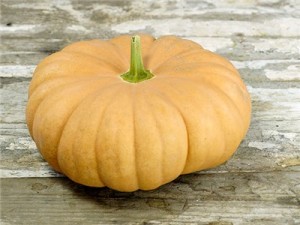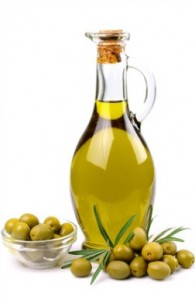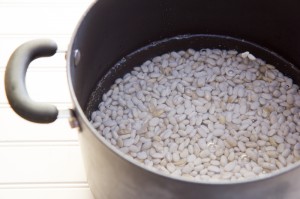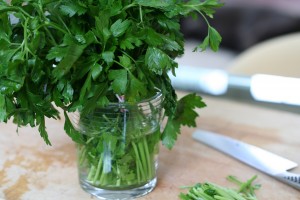 How to Make Homemade Broth
How to Make Homemade Broth
This really is a cinch, and infinitely more delicious than the boxed version. And it is a must-have if you are feeling under the weather.
Chicken Broth:
- Place your chicken (a whole chicken–cut up to make it easier to fit in the pot–OR chicken thighs OR chicken necks/backs/feet/wings…really, anything but the breasts…OR that giant turkey neck stuffed inside your Thanksgiving bird) in a very large soup pot or stock pot.
- Cover by 2 inches of cold tap water.
- Add 3 or more of the following aromatic vegetables: whole carrots, celery stalks with leaves attached, anything in the onion family, cut in half (leeks, shallots, scallions), smashed garlic cloves, fresh parsley or dill stems.
- Then add 10 whole peppercorns and 1 teaspoon of kosher or sea salt.
- Bring to a boil, reduce heat the medium-low, and simmer UNCOVERED for 1 hour.
- Cool, strain, and store for 1 week in the refrigerator (in glass or plastic) and pretty much indefinitely in the freezer (in plastic).
Vegetable Broth:
Same as above, just skip the chicken and add at least 4 different items from the list above. Celery, carrots, and onion a must.
Need help preparing for the upcoming holiday? Check out our Thanksgiving Tutorial class!
Fall Squash Highlights
 Butternut: smooth, tan skinned squash, with long neck and a bulbous bottom. It has an abundant amount of bright-orange flesh that cooks up sweet and creamy. Peeling this cumbersome squash is often tricky (slippery smooth to hold and the skin is quite tough). One way to avoid that is the roast it, skin on: Cut in half top to bottom (after removing 1/2 inch from the top and bottom so you have a solid base for cutting), lay it cut side down (keep the seeds in) on a foil-lined baking sheet, and roast for 45 minutes at 375 degrees, or until the flesh is very soft when pierced with a fork. When cool enough to handle, turn flesh side up, scrape out the seeds and scoop out the soft squash. Serve as is, with a bit of butter and maybe orange zest and salt. Or stir in to risotto, black beans, or pasta (with some creamy ricotta cheese!) for many butternut-ladened dinners ahead.
Butternut: smooth, tan skinned squash, with long neck and a bulbous bottom. It has an abundant amount of bright-orange flesh that cooks up sweet and creamy. Peeling this cumbersome squash is often tricky (slippery smooth to hold and the skin is quite tough). One way to avoid that is the roast it, skin on: Cut in half top to bottom (after removing 1/2 inch from the top and bottom so you have a solid base for cutting), lay it cut side down (keep the seeds in) on a foil-lined baking sheet, and roast for 45 minutes at 375 degrees, or until the flesh is very soft when pierced with a fork. When cool enough to handle, turn flesh side up, scrape out the seeds and scoop out the soft squash. Serve as is, with a bit of butter and maybe orange zest and salt. Or stir in to risotto, black beans, or pasta (with some creamy ricotta cheese!) for many butternut-ladened dinners ahead.
 Delicata/Sweet Dumpling Squash: ridged, green- and orange-striped squash with edible skin that changes from tan to yellow as it matures. The delicata is long and shaped like a fat zucchini, while the dumpling variety has the same skin design but is shaped like a squat pumpkins. Both squash are at their sweetest when the stripes turn from dark green to bright orange.
Delicata/Sweet Dumpling Squash: ridged, green- and orange-striped squash with edible skin that changes from tan to yellow as it matures. The delicata is long and shaped like a fat zucchini, while the dumpling variety has the same skin design but is shaped like a squat pumpkins. Both squash are at their sweetest when the stripes turn from dark green to bright orange.
Kuri: round, bright red-orange Japanese variety of squash with dark yellow flesh that cooks up slightly drier than the butternut variety. Can be peeled and used in place of potatoes or any root vegetables (has a bit of starchiness to it) or roasted like its butternut cousin, above. Has a mild chestnut flavor.
 If you are planning on making fresh pumpkin pie this year, look no further than this beauty: the Cheese Pumpkin. It is THE pumpkin for pies…dense sweet flesh that is vividly orange in color, with less of a water content than the butternut, making it ideal for rich pumpkin pie. Also fantastic for pumpkin bread or any other recipe that calls for canned pumpkin. This is the type of pumpkin that is used in commercial canning.
If you are planning on making fresh pumpkin pie this year, look no further than this beauty: the Cheese Pumpkin. It is THE pumpkin for pies…dense sweet flesh that is vividly orange in color, with less of a water content than the butternut, making it ideal for rich pumpkin pie. Also fantastic for pumpkin bread or any other recipe that calls for canned pumpkin. This is the type of pumpkin that is used in commercial canning.
The Benefits of Good Old-Fashioned Home Cooking
When you cook at home, you never need to consider calories, fat or salt.
It is a free ride because whatever you cook from scratch is always a better option than takeout or packaged foods.
Live it up!
Learn more in our “Good Food” seminar.
How to Recognize “Good Fats”
Good fats are the ones that you could make with your own two hands:
- Extra-virgin olive oil
- Butter
- Real lard
- Bacon fat
- Duck fat
- Coconut and nut oils
If you need to solicit a refinery or chemist to produce your cooking oils, you are headed in the wrong direction.
Learn more about good fats in our “Good Food” seminar.
Things to Do with a Ripe Peach
Peaches are in season for the summer, and here are some of our favorite ways to enjoy them:
- Top with fresh ricotta and honey
- Finely chop with some red onion, lime juice and salt for a
quick salsa for chicken or pork
- Slice in turkey sandwiches
- Add to salads, along with picked red onions and feta
- Or just eat alone over the sink!
Learn more summer fruit recipes in Farmers’ Market Suppers.
Know Your Honing Steel
An important tip when it comes to knife care:
What is pictured here is NOT a knife sharpener. This is a honing steel and is used to keep your knife’s edge straight between uses.
You cannot actually sharpen your knife with this tool, despite the fact that it is sold with every knife block set.
Learn more about sharpening and caring for your knives in Knife Skills 101.
Quick Soak Method for Dried Beans
Try this quick-soak method for dried beans so you don’t have to wait 6 hours to soak them the traditional way.
- Cover with 2 inches of water and bring to a boil.
- Remove from heat, cover, and let stand 1 hour.
- Drain and ready to cook!
Learn about fresh beans now in season at our Summer Farmers’ Market Tour and Cooking Class.
How to Store Fresh Herbs
- Store your “leafy” herbs (parsley, cilantro, basil, dill) like flowers: place in a glass of water in your fridge for longevity. Basil too, but store on the counter (it doesn’t like the chill).
- “Woody” herbs (rosemary, sage, and thyme) can also be stored this way, but often last longest when stored in the small plastic box in which they are often sold.
Learn more in our “Good Food” seminar.






